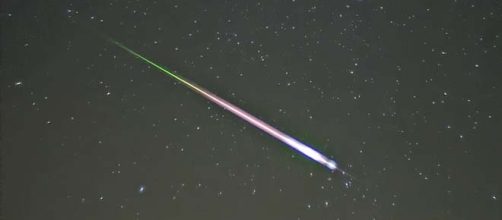Each November, the Leonid meteor shower occurs when the Earth crosses the orbital path of the Comet 55P/Temple-Tuttle. The Leonid meteor shower appears as the comet’s debris hits the Earth’s atmosphere, where it becomes vaporized and the resulting particles shower down to Earth. This year, the peak showing of the Leonid meteor shower is expected to happen between midnight and dawn November 18th.
The phenomenon is called Leonid because the meteors usually appear in the sky within the constellation of Leo. This year’s meteor showers are actually already going on, but are expected to peak on November 17th and 18th, 2015.
Best locations to see Leonid meteor shower
It’s normally possible to witness the Leonid meteors just about anywhere, but it’s best to find a location where city lights won’t interfere with the light from the meteors for best results. Unfortunately for some potential viewers in Ohio, Mississippi and the Northwest, a large storm system is predicted to project cloud cover so it may impair any sight of this year’s meteor storms.
However, if you are in southern California or southern Florida you can expect clear skies and should be able to view them. If you miss the live meteor showers, you can also watch a live broadcast on Slooh at live.slooh.com on November 17 at 8 p.m. This year it is not expected to be as bright as the Taurid meteor shower that occurred last time, but this year’s Leonid shower is expected to bring about 15 to 20 meteors an hour.
Leonids are famous for past meteor storms
The Leonid shower is famous for creating meteor storms. In 1833, North America saw one of the largest, having about 100,000 meteors every hour. This year’s storm won’t be half that good, unfortunately, but depending on your viewing location, you could be treated to an exciting sight.
Try to find an open area for your viewing of the meteors and look straight up into the sky when it gets dark. Make sure you find someplace far from artificial lighting, and allow your eyes about a half hour to adjust to the dark. This year there is expected to be a crescent moon, which shouldn’t impede the light as much as in some years.
The Comet Temple-Tuttle shows up every 33 years but leaves a long line of debris behind that gives us the Leonid meteor shower every November as the Earth passes through the orbital path.

